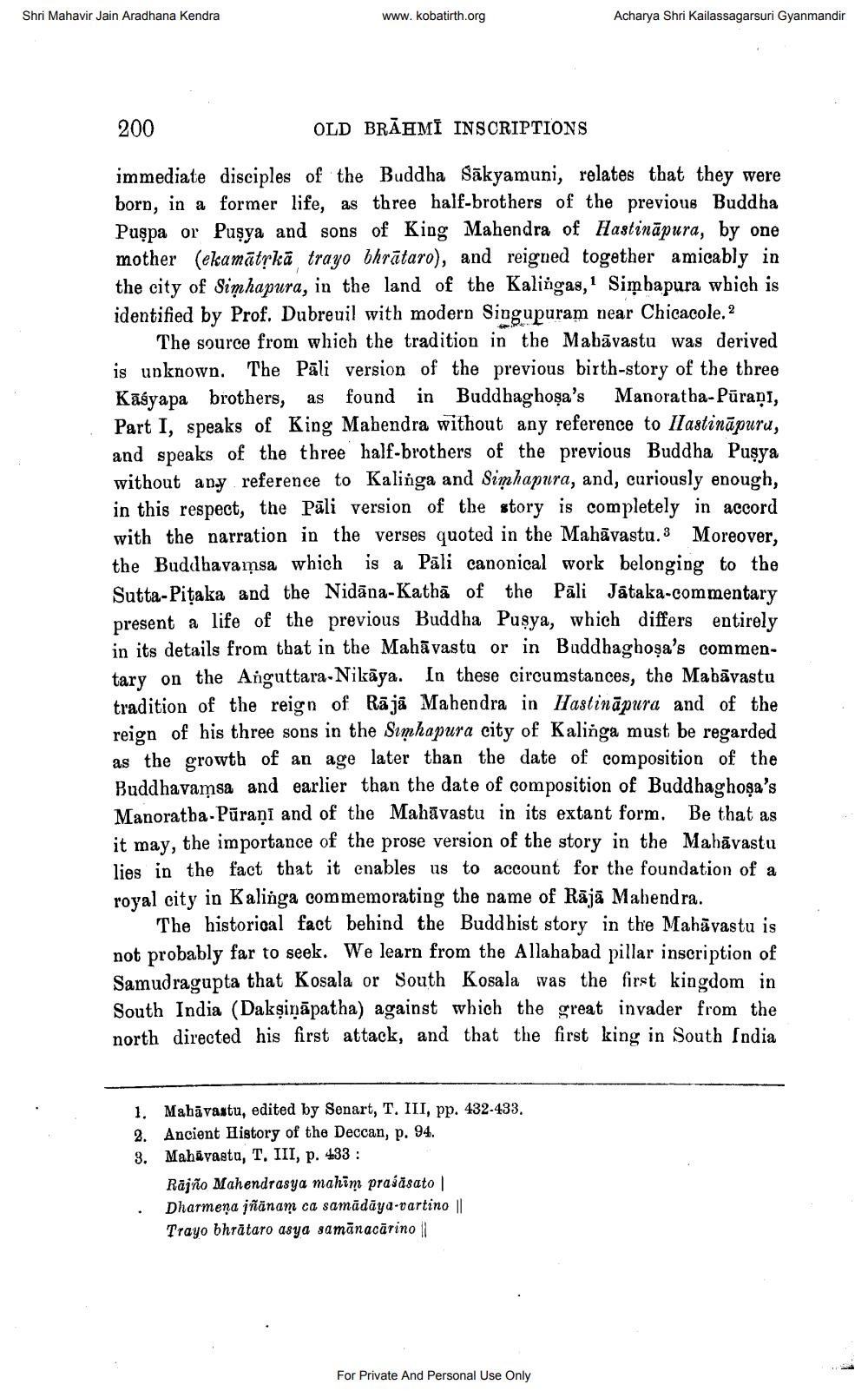________________
Shri Mahavir Jain Aradhana Kendra
www.kobatirth.org
Acharya Shri Kailassagarsuri Gyanmandir
200
OLD BRĀHMI INSCRIPTIONS
immediate disciples of the Buddha Sākyamuni, relates that they were born, in a former life, as three half-brothers of the previous Buddha Puspa or Puşya and sons of King Mahendra of Hastināpura, by one mother (ekamātykā trayo bhrātaro), and reigned together amicably in the city of Simhapura, in the land of the Kalingas,' Simbapura which is identified by Prof. Dubreuil with modern Singupuram near Chicacole.2
The source from which the tradition in the Mabāvastu was derived is unknown. The Pāli version of the previous birth-story of the thr Kāśyapa brothers, as found in Buddhaghoşa's Manoratba-Pūrani, Part I, speaks of King Mahendra without any reference to llastināpuru, and speaks of the three half-brothers of the previous Buddha Pusya without any reference to Kalinga and Simhapura, and, curiously enough, in this respect, the Pāli version of the story is completely in accor with the narration in the verses quoted in the Mahāvastu.3 Moreover, the Buddhavamsa which is a Pāli canonical work belonging to the Sutta-Pitaka and the Nidāna-Kathā of the Pāli Jataka-commentary present a life of the previous Buddha Pusya, which differs entirely in its details from that in the Mahāvastu or in Buddhaghoşa's commentary on the Anguttara-Nikāya. In these circumstances, the Mabāvastu tradition of the reign of Rājā Mahendra in Hastināpura and of the reign of his three sons in the Simhapura city of Kalinga must be regarded as the growth of an age later than the date of composition of the Buddhavamsa and earlier than the date of composition of Buddhaghoşa's Manoratba. Pūrani and of the Mahāvastu in its extant form. Be that as it may, the importance of the prose version of the story in the Mabāvastu lies in the fact that it enables us to account for the foundation of royal city in Kalinga commemorating the name of Rājā Mahendra.
The historical fact behind the Buddhist story in the Mahāvastu is not probably far to seek. We learn from the Allahabad pillar inscription of Samudragupta that Kosala or South Kosala was the first kingdom in South India (Dakşiņāpatha) against which the great invader from the north directed his first attack, and that the first king in South India
endra.
1. Mahāvastu, edited by Senart, T. III, pp. 432-433. 2. Ancient History of the Deccan, p. 94.
Mahāvastu, T. III, p. 433 : Rajño Mahendrasya mahim praśāsato Dharmena jñänam ca samādāya-vartino || Trayo bhrātaro asya samānacārino 11
For Private And Personal Use Only




